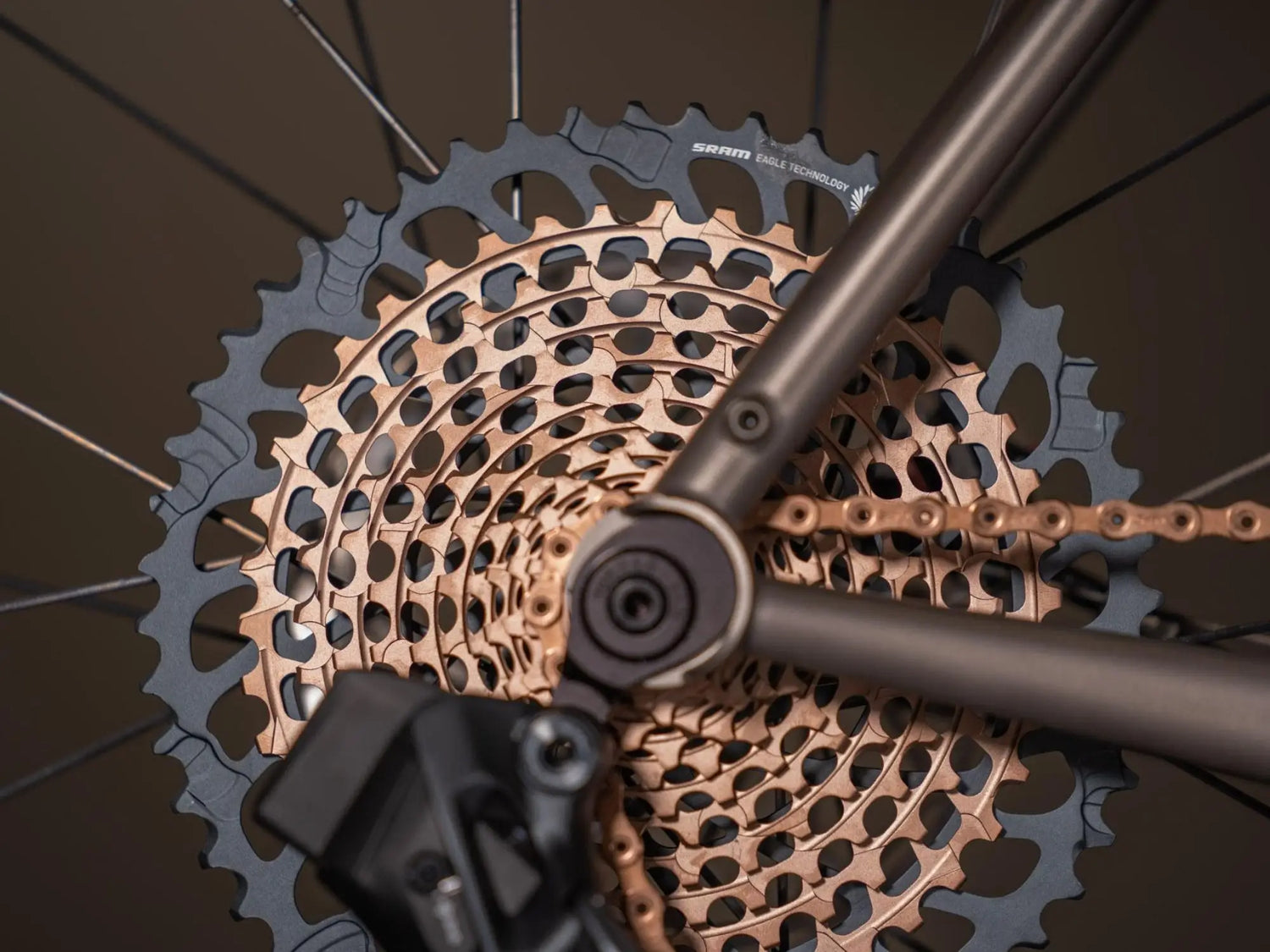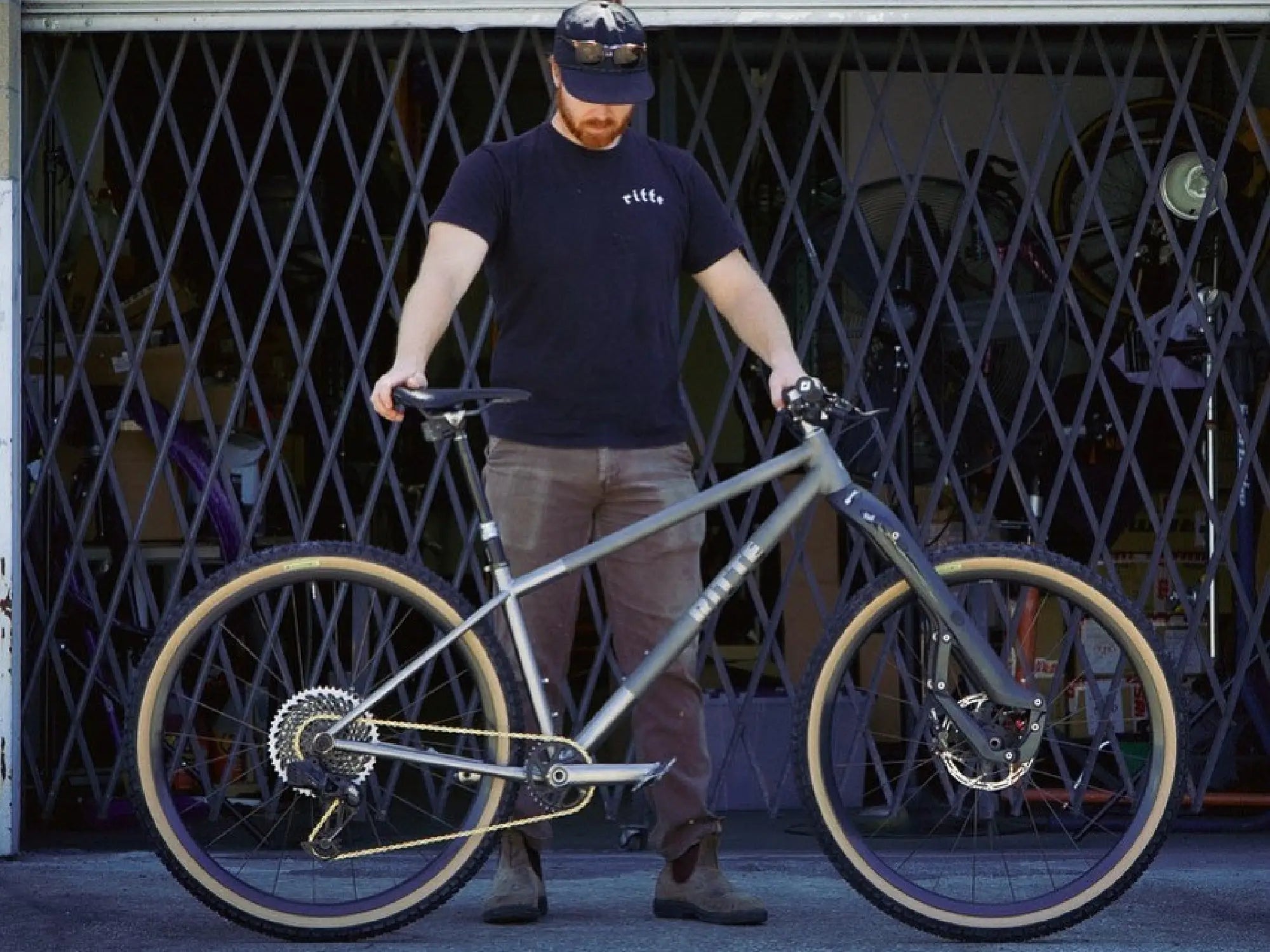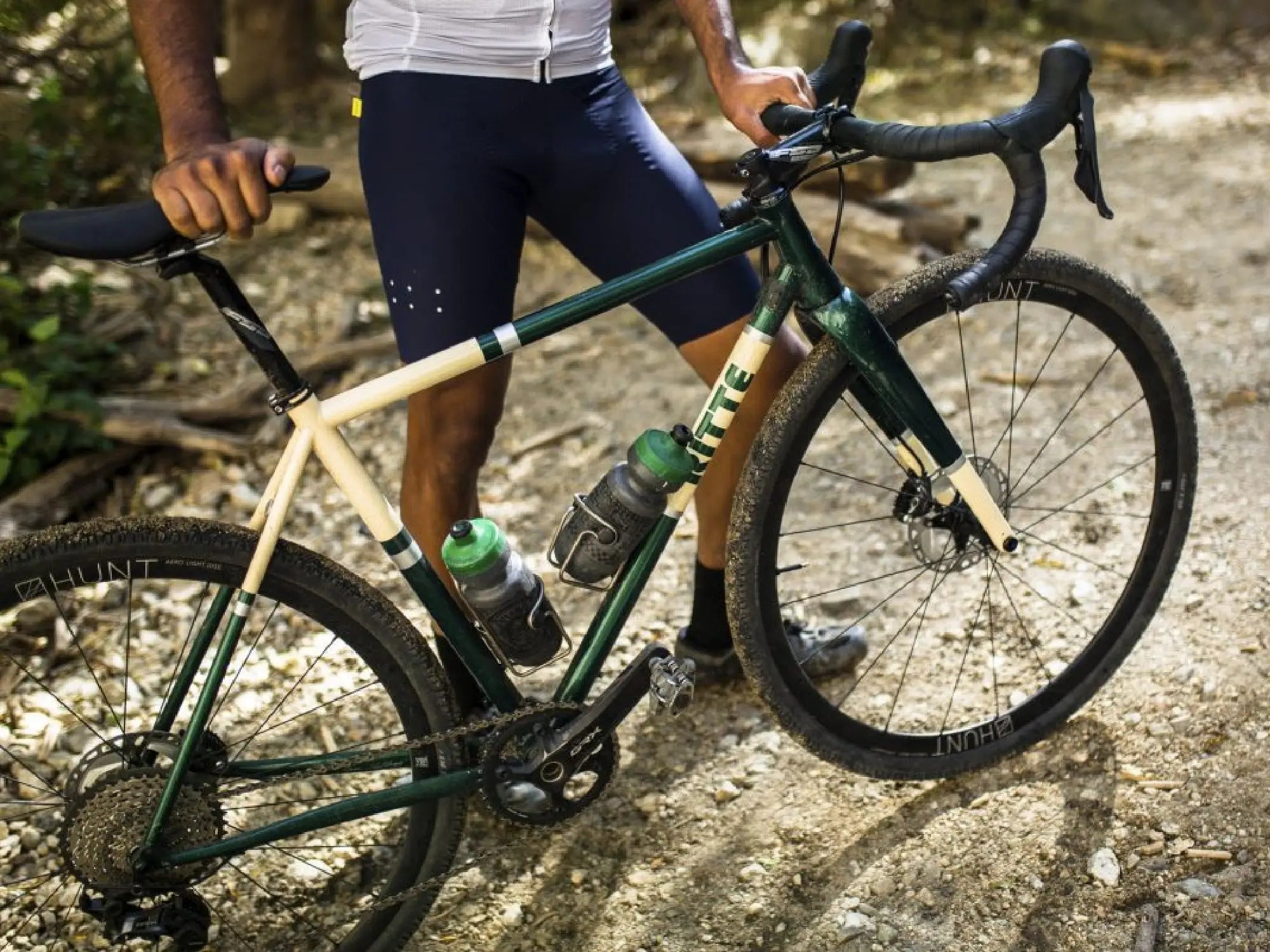All About Gearing
1x, 2x, Compact, Flat Top, Di2, 12sp, AXS…what’s it all mean? We get a lot of questions about gearing - and if it’s been a few years since you bought your last road or gravel bike, there is a lot more to know! We'll tackle the surface level of what we've been offering and liking for gearing here, and dig deeper in a future post.
In the last few years the number of gearing options for road and gravel bikes has grown immensely - with more crossover than ever between drop bar and flat bar bikes. There is a solution for nearly every ride situation in both 11 Speed and 12 Speed, mechanical shifting or electronic shifting, in single front chainring or double front ring options. To make some sense out of all of it, we’ll touch on the most common options we spec and what situations they work well in. All of our bikes are built to order, so we have the luxury of fine tuning these options on a per-rider basis.
Most of what we offer is SRAM or Shimano, so we’ll focus mainly on those two here.
1x vs 2x:
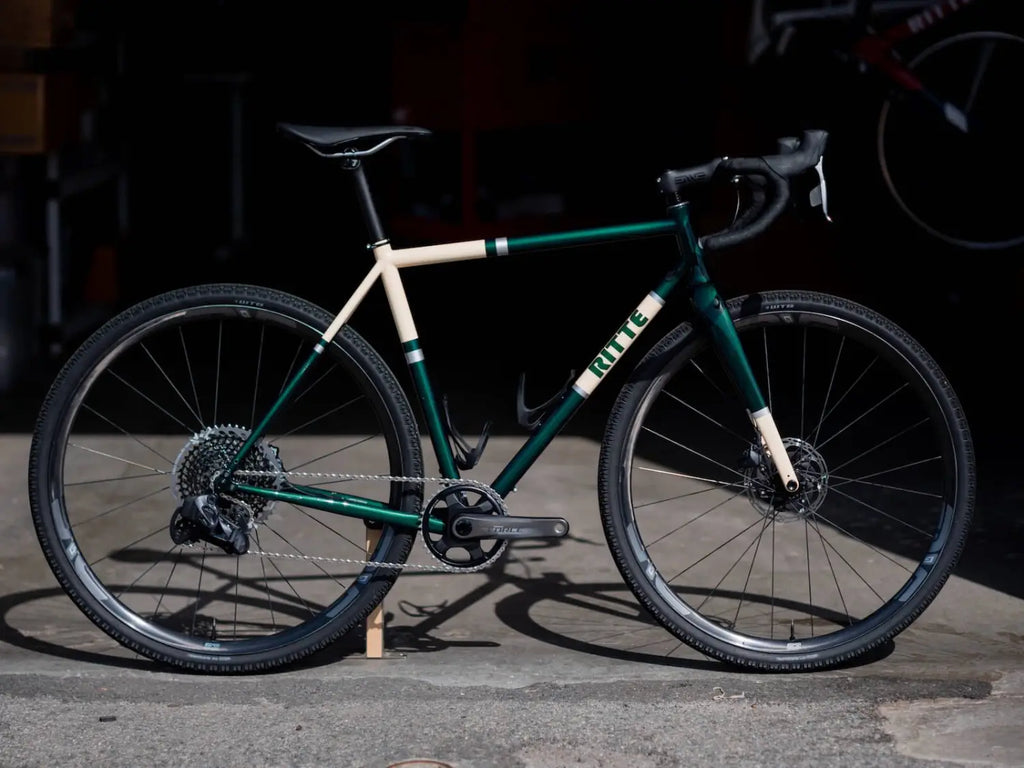
1x:
To start off with the basics, we’ll tackle 1x vs 2x. 1x is a single front chainring setup, more similar to what has traditionally been found on mountain bikes. 2x is the more traditional double ring with front derailleur.
1x is ideal for gravel bikes, off-road riding, and the like. With 1x you’ll use a wider range rear cassette and a single front chainring. This setup provides some simplicity, often uses a stouter rear derailleur with a clutch to keep the chain taut over rough terrain, and is targeted at providing a lot of low range gearing. Sacrifices with 1x are larger jumps between gears, and generally less top-end speed. With gravel riding, there is generally a smaller range of speeds the bike needs to perform well in (as it’s rare to be rolling in a 25mph+ paceline on a gravel bike) so this works out totally OK.
While we do have some riders opting for 1x road setups with traditional road cassettes, this is generally better in flatter areas where less low end is needed.
With Shimano GRX (or SRAM Force 1 11sp) we opt for a front chainring in the 38-46t range and a cassette of either 11-42t or 11-46t depending on individual rider locales, strengths, etc. Shimano doesn’t officially support 11-46t cassettes with their GRX derailleurs, but we’ve found it to run quite nicely.
With SRAM AXS we like the “mullet” setup. This uses SRAM AXS electronic road shifters and an Eagle AXS electronic mountain bike derailleur. Front chainring sizes are still 38-46t in most configurations, but the Eagle 12sp mountain bike cassette is available in 10-50 or 10-52 ranges. This is the most capable 1x setup in our experience.
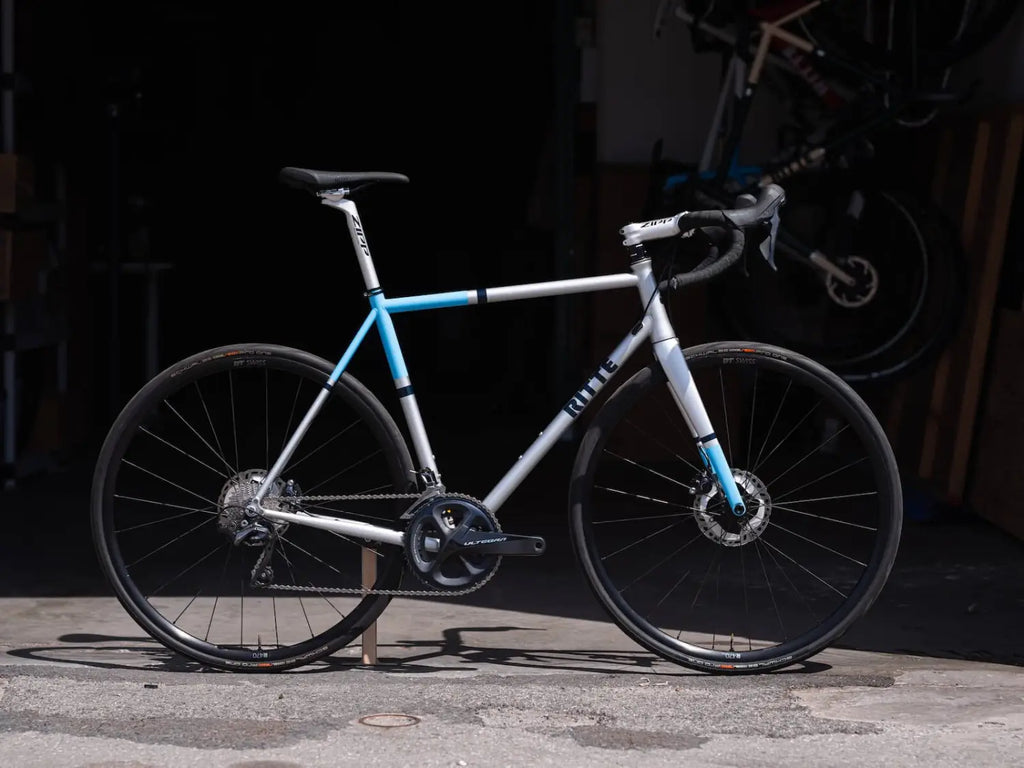
2x:
2x is more road focused, but not an option to overlook for your gravel build. With 2x you have a very wide gearing range available, with more finite steps to choose from. For road bikes, we think 2x is the way to go. For gravel bikes that will be spending a lot of time on the road or on dirt roads rather than singletrack trails, 2x works very well. Disadvantages to 2x offroad include the potential for front chain drops and a bit more complexity to the drivetrain setup. Weight wise, it is about even when factoring in the heavier cassettes and rear derailleurs typical of a 1x setup.
11sp vs 12sp:
In the past, when all manufacturers were on 11sp, pretty much all gearing combinations were interchangeable between brands. With the introduction to 12sp, things have become a bit more brand specific.
For Shimano and SRAM 11sp road we generally specify either a 50/34 (aka Compact) or a 52/36 (aka Mid-Compact) crank. 50/34 is a good do-it-all setup, and works well for hilly areas with the lower 34t front gear. 52/36 is preferred by some riders, there is a je ne sais quoi to the way it feels and rides - though that is hardly scientific and we stick to the 50/34 for most riders unless they specifically want the taller front gearing.
11sp cassettes come in a huge variety of offerings - the ones we use the most are 11-32, 11-34, and SRAM’s 11-36. While we do specify an 11-28 on occasion, we find that most riders like the option of a lower gear or bailout gear. With the 11-34 you get a 1:1 low gear, which is enough for most anything. For riders who are in very steep areas, intending to do some bike touring, or otherwise just want a very low option - the 11-36 provides it. While the 11-36 isn’t officially supported by any of the medium-cage road derailleurs it does work very nicely in Shimano setups and on many SRAM setups.
As of late, we’ve been building mainly with SRAM AXS electronic, and this is where the drivetrain options have gotten really interesting. SRAM has changed the gearing offerings all around, but also removed cross compatibility with other manufacturers. With SRAM AXS 12sp you can get taller and shorter gearing all in one. We hinted at this above with the Mullet setup - offering both a taller and lower offering than 11sp options do. With 2x, the increased ranges are even more impressive.
SRAM changed out the front offerings - 46/33 is their “Compact” and 48/35 is their “Mid-Compact.” The cassettes we use most frequently are 10-30, 10-33, and 10-36. Now going from 50t front ring down to a 46t ring seems like you’re going to lose top end - but with the 10t small cog in the back you actually still have more top end range than the 50t with an 11-32 cassette. See below for an example of speed at cadence with this gearing, and click through to the BikeCalc link to compare with what you're currently riding.
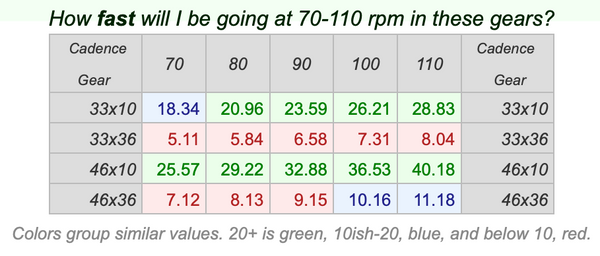 Gear Calculator Courtesy of BikeCalc.com
Gear Calculator Courtesy of BikeCalc.com
With a 46/33 crank and a 10-36 cassette we’re able to equip our bikes with gearing that’ll truly make it up most anything we dare ride. It allows us to run larger 32c tires on our road bikes and have gearing that makes dirt climbs approachable. Nothing is without a drawback though, and the biggest detriment to AXS is weight. SRAM’s lightest groups are heavier than Shimano. This difference is generally around 250-400g, so we think the increased gearing range and tight steps between gears is well worth it.
We’ll see what happens when the next generation of Shimano gearing comes out - but we’ve been very excited with the expanded range that AXS 12 speed gearing has offered. It’s expanding new roads and routes to all sorts of people - for all of the unnoticeable “improvements” that happen in the cycling industry, this one is real.

If these roughly details aren’t quite enough - stay tuned where we’ll discuss the nuances of specific 1x setups, 2x setups, and what we are riding here in Los Angeles and elsewhere.


